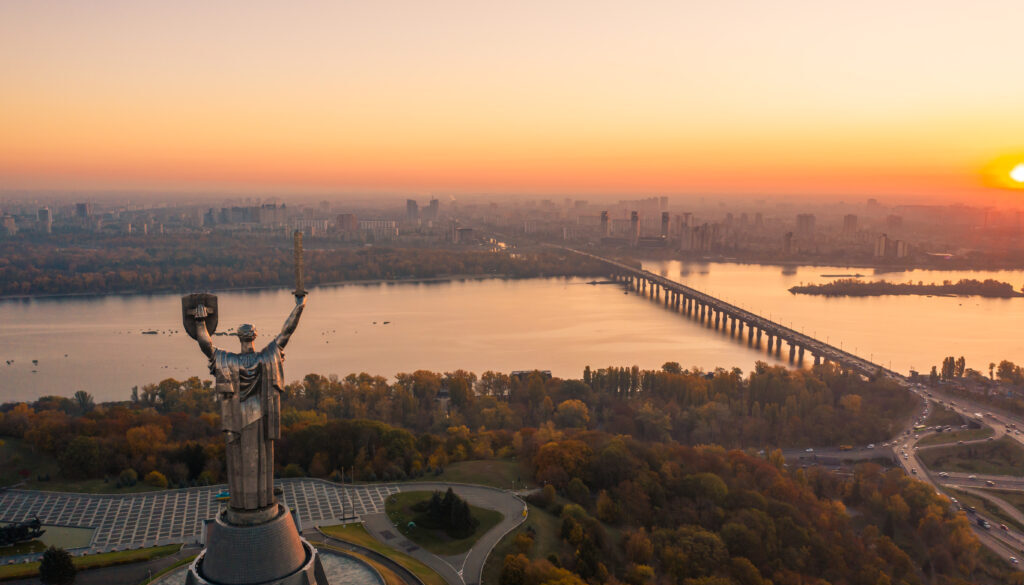“Everyday Life in a Country at War” – explore how Ukrainians adapt daily: education, work, electricity, culture
di Kateryna Makarenko
Tempo di lettura 6'
Since the full-scale invasion of Ukraine by Russia in February 2022, life for millions of Ukrainians has changed forever. The war is not just a breaking point — it has become part of everyday reality. Strikes have hit homes, schools, hospitals, power lines, and the invisible spirit of a people. And yet Ukrainians wake each morning, carry out tasks, care for one another, try to live.
Education
The classrooms are still open, but the lesson has changed. Schools in safer regions keep functioning, but many have been damaged, destroyed, or turned into bomb shelters. According to Ukrainian government data, more than 708 educational institutions were reduced to rubble by the end of 2023.
Consider the city of Dnipro: in one violent strike, 19 schools, 10 kindergartens, a music school, and many residential buildings were damaged. Children open their books beside sirens, teachers plan evacuation drills and online backup lessons, families decide if today’s journey to school is safe or not. This is not normal life—it’s survival in the guise of routine.
Despite the damage, teachers and students have created new ways to learn. Many schools now use hybrid systems, switching between in-person classes, online lessons, and underground shelters depending on the danger. Educational platforms such as “All-Ukrainian School Online” and regional digital hubs allow thousands of children to keep studying even near the frontline. When formal schooling is disrupted, parents and volunteers organize small community learning groups to make sure children do not fall behind. Russian strikes targets children’s future:every destroyed classroom is a wound in the national memory.
Work and Economy
Work in Ukraine today is heavy with meaning. It’s not only about earning money—it is about keeping the nation alive. The economy is bleeding: losses in infrastructure are staggering. The Kyiv School of Economics estimates damages of US $170 billion as of November 2024. More specifically: in the education sector alone, over 4,000 institutions were damaged or destroyed, including hundreds of schools, kindergartens and universities. In the healthcare sector: more than 1,500 medical facilities were damaged or destroyed, including 515 hospitals.
Many businesses have relocated from eastern to western Ukraine, moving production lines to safer regions and rebuilding what they can. Remote work, digital services, and small-scale manufacturing have grown rapidly, showing how the economy adapts under pressure. At the same time, civil society groups and volunteer networks fill the gaps left by destroyed institutions, proving that the system bends but does not break.
Workers shift between their normal jobs and war-work: repairing utilities, volunteering, supporting displaced families. Ongoing Russian strikes interrupt daily routines, damage energy grids, and hit cities far from the frontline For instance, on 23 June 2025, Russia launched 352 combat drones and 16 missiles at Kyiv region; on the same day, Dnipro and nearby cities suffered ballistic strikes killing at least 19 people and injuring hundreds. Work is no longer just about profit—it is about resistance.
Family Life and Daily Routines
Families live under constant stress. Many have lost homes, many have lost loved ones. According to UN data, from February 2022 to November 2024, Ukraine recorded over 40,000 civilian casualties, including 12,340 people killed and 27,800 injured. In the Donetsk and Kherson regions, many casualties happen near the contact line—places once home, now battle zones. A rocket in the Shevchenkivskyi district of Kyiv collapsed a five-story building to its basement. Buildings used to shelter children and young people in their normal lives—now rubble.
To survive, families have developed small routines that help them stay safe. Many keep “go-bags” ready for sudden evacuation, use Telegram channels and air-raid apps to track danger, and rely on grandparents or neighbors for childcare when parents must work in essential services. Shared rituals—like eating dinner together even during blackouts—become acts of strength and reminders that family life still exists.
Parents ask themselves: how to raise children in a city under fire? How to maintain love and trust when ongoing strikes try to destroy both? Every shared meal might be the last one before a blackout. Every night interrupted by air-raid alerts pierces the illusion of safety.
Infrastructure, Utilities and Everyday Challenges
This war is material as much as it is moral. Russia knows that to break a people you hit their infrastructure—their homes, hospitals, schools, power lines. From February 2022 to December 2023, Ukraine lost 106 hospitals and clinics, 708 educational institutions, and a vast number of public buildings. Also, medical facilities alone: over 1,984 facilities damaged, 301 destroyed in three years. One missile attack on Kyiv’s children’s hospital, OKHMATDYT, killed and injured dozens of children, medical staff and parents. Ukrainian cities have had to adapt to constant shortages. Energy engineers and local governments now use “energy schedules” to ration electricity fairly, giving priority to hospitals, schools, and essential services. Families create neighbourhood energy-sharing systems, use power banks, and even return to old heating methods like wood stoves. These everyday adaptations show how people learn to live with danger and uncertainty.
Electricity, heating, water—it all becomes a gamble. Families charge devices in short windows, neighbourhoods share generators, children do homework under candle-light or in bomb-shelters. And yet, people persist. A blackout will not erase a mother’s kiss, a father’s warning, a neighbour’s borrowed charger. Because survival is a daily act of defiance.
Culture, Identity and Resilience
Russia’s actions aim not only at damaging territory, but also at weakening Ukrainian identity. In response, culture fights back. Theatres operate in basements. Streets are filled with murals celebrating Ukrainian heroes. People cook meals in shelters. Poetry is read while sirens wail. Cultural adaptation has also moved online. Museums host virtual exhibitions, libraries digitize their collections, and artists use social platforms to share their work abroad and raise funds. At the same time, traditional crafts, songs, and the renewed use of the Ukrainian language in public life act as both therapy and defiance—a way to protect cultural roots when everything else feels unstable.
When Russia bombs a children’s hospital or a school, it is hardly a mistake — these strikes are part of a pattern that spreads fear among civilians. On 3 September 2024, missiles hit a school and a nearby hospital in Poltava, killing dozens. Attacks on civilians and civilian infrastructure constitute grave violations of international humanitarian law, which mandates their protection.International reports show that most civilian deaths come from “explosive weapons in populated areas” used by Russian forces. And still: Ukrainians speak their language. Ukrainians hold onto their identity. Ukrainians refuse to be broken.
Conclusion
This is a war Ukraine never sought, yet it has unfolded on their land as a result of Russia’s actions.Yet everyday life in this country at war is not paused—it is raging, refusing to bow. Ukrainians are still learning, still working, still loving, still dreaming—but inside a furnace of destruction forced upon them. They wake up in cities burning, carry children to schools that might not exist tomorrow, work jobs that support the survival of thousands, share homes shaken by missiles, keep culture alive in the horns of ruin. Strikes can destroy buildings and shatter lives. But they cannot destroy the human soul that demands dignity, identity, and freedom. Every destroyed school, every killed child, every blacked-out neighbourhood—these are not statistics. They are cries that echo across fields and cities, across borders and seasons: We are alive. We used to be safe. We will be safe again. And when the world looks at Ukraine—it must see not only the war on the frontlines—but the daily lives of millions who refuse to give up. Because survival is not enough. Ukraine wants life. And life will prevail.
- Bibliografia
- Human Rights Watch. World Report 2025: Ukraine – “Explosive weapons in populated areas … Russian forces carried out numerous attacks … at least 219 civilians killed and 1,018 injured in July.” (Human Rights Watch)
- The New Voice of Ukraine. “More than 106 hospitals and 708 educational institutions were destroyed – Ukrainian news” (Dec 2023) (The New Voice of Ukraine)
- UN Human Rights Monitoring Mission in Ukraine. “Ukraine Situation: Damage to schools, hospitals, thousands of educational institutions.” (UNHCR Data Portal)
- UNN (Ukraine News Network). “Medical facilities under fire: how many have been destroyed by the occupiers over three years of war.” (Українські Національні Новини (УНН))
- Kyiv School of Economics. “Damages to Ukraine’s infrastructure due to the war have risen to $170 billion.” (Kyiv School of Economics)
- UA-Institute of Politics. “The situation in Ukraine 18-25 June 2025” – data on drone & missile attacks on Kyiv region, Dnipro, etc. (Український інститут політики)
Immagine di Freepik



